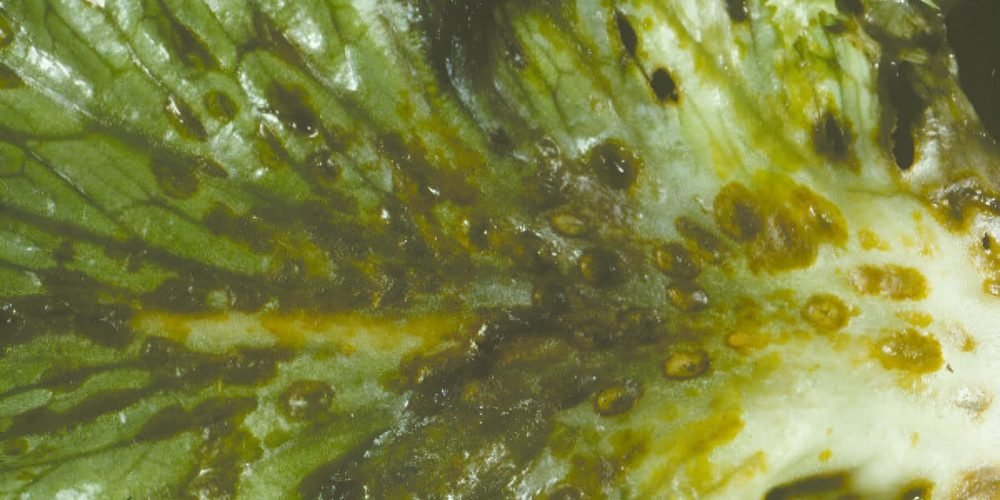Anthracnos
Scientific name: Colletotrichum
Type of disease: fungal
Pathogen: Colletotrichum coccoides
Cause of disease
Symptoms are caused by several types of fungi of the genus Colletrichum. They also live in the soil attached to seeds, or on plant debris and alternative hosts for up to four years. There are two ways in which infections are transmitted to new plants. Primary infections occur when soil-borne spores infect seeds and seedlings as they grow, growing systematically in tissues. In other cases, the spores burst and the fungus is sprayed onto the lower leaves by raindrops and initiates an infection that spreads upward. Secondary infection begins when spores produced within leaf spots or fruit by splashing from rain, dew, sucking insects, or field workers spread to upper plant parts or other plants. The growth of the pathogenic fungus is promoted by cold to warm temperatures (20 to 30°C), soil with high pH, prolonged leaf moisture, frequent rainfall and dense clouds. But balanced fertilization makes crops less susceptible to anthracnose.
Breadwinner:
. It is found in apples, grapes, beans, apricots, tomatoes, cotton, soybeans, onions, millet, almonds, sorghum, strawberries, olives, bananas, citrus fruits, mango, papaya, lettuce, coffee, lentils, pistachios, guava, turmeric, karela (bitter cucumber) and tobacco.
Suitable circumstances:
The spread of the disease is suitable for temperature ranging between 20 and 30 C and ground humidity not less than 90% (from rain or excessive irrigation)
the influence:
Symptoms initially become noticeable as small, circular indented areas, which later develop into dark centers. The diseased spots continue to grow larger over time, spreading throughout the entire site of the leaves, which in turn makes the plant unusable in any way, leading to the destruction of the season.
life cycle:
It's called sclerosis. The pathogen may also live in debris in the form of filamentous threads called hyphae. In late spring, lower leaves and fruit may become infected by germinating sclerotia and spores found in soil debris. Infections of the lower leaves of tomato plants are important sources of secondary infection spores throughout the growing season. Senescent leaves infected with early blight infections and leaves infected with flea beetle are especially important sources of spores because the fungus can colonize and produce new spores in these infected areas. Enterococcal growth is fastest at 80°F (27°C), although the fungus can cause infection over a wide range of temperatures between 55-95°F (20-30°C). Humid weather promotes the development of the disease, and spraying water in the form of rain or irrigation helps the disease spread. The pathogen also produces a neck full of conidia that helps the infection spread.
Symptoms:
. Dark circular spots on the surface and edge of leaves.
. Rot on the stems and branches.
. Decay of stems, branches and leaves.
. Flowers and fruits fall prematurely.
. Dark circular spots on fruits.
Anthracnose first appears as small, irregular, yellow spots surrounded by brown or red margins. They often start from the veins of the leaf in the middle, then these spots become dark with time and may also expand and cover the leaf completely, then the leaves turn black, resembling a burn. If the leaves are very small when infected, they can become wrinkled and distorted.
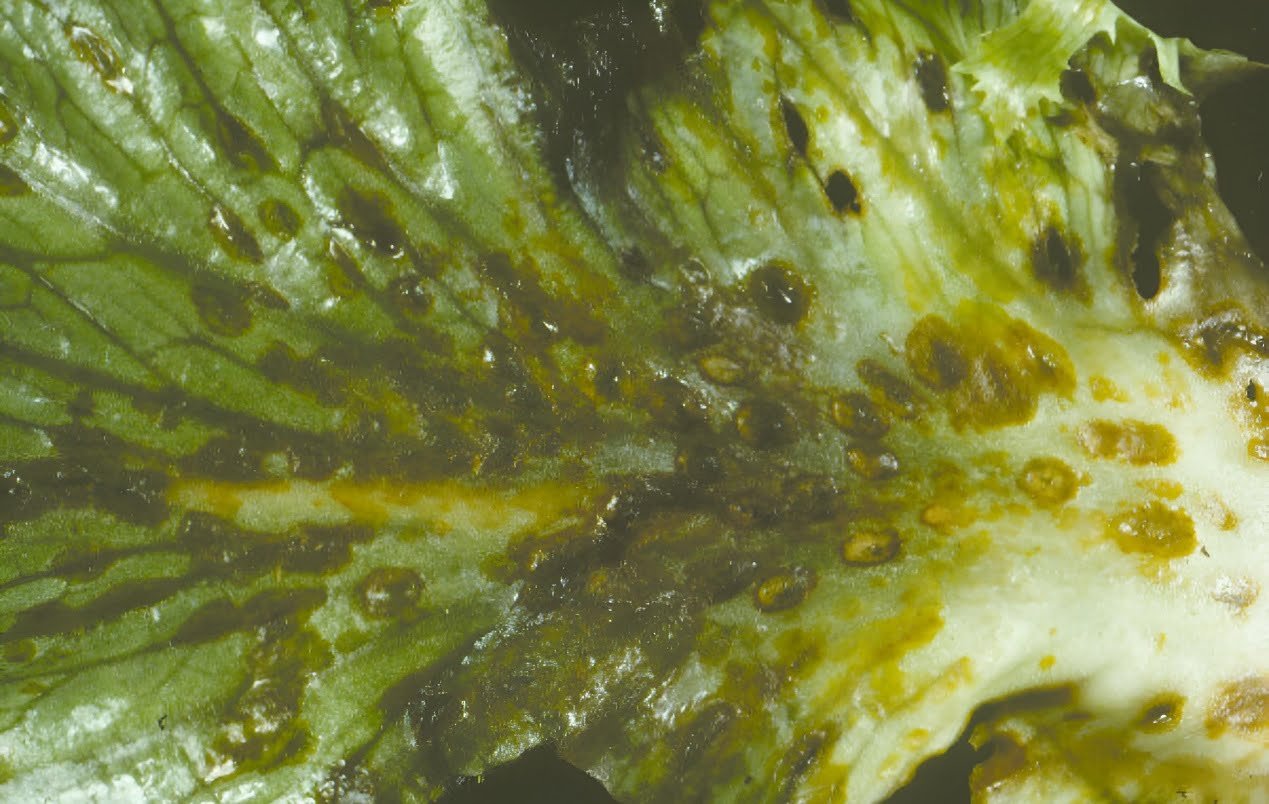
Picture of anthracnose symptoms on lettuce
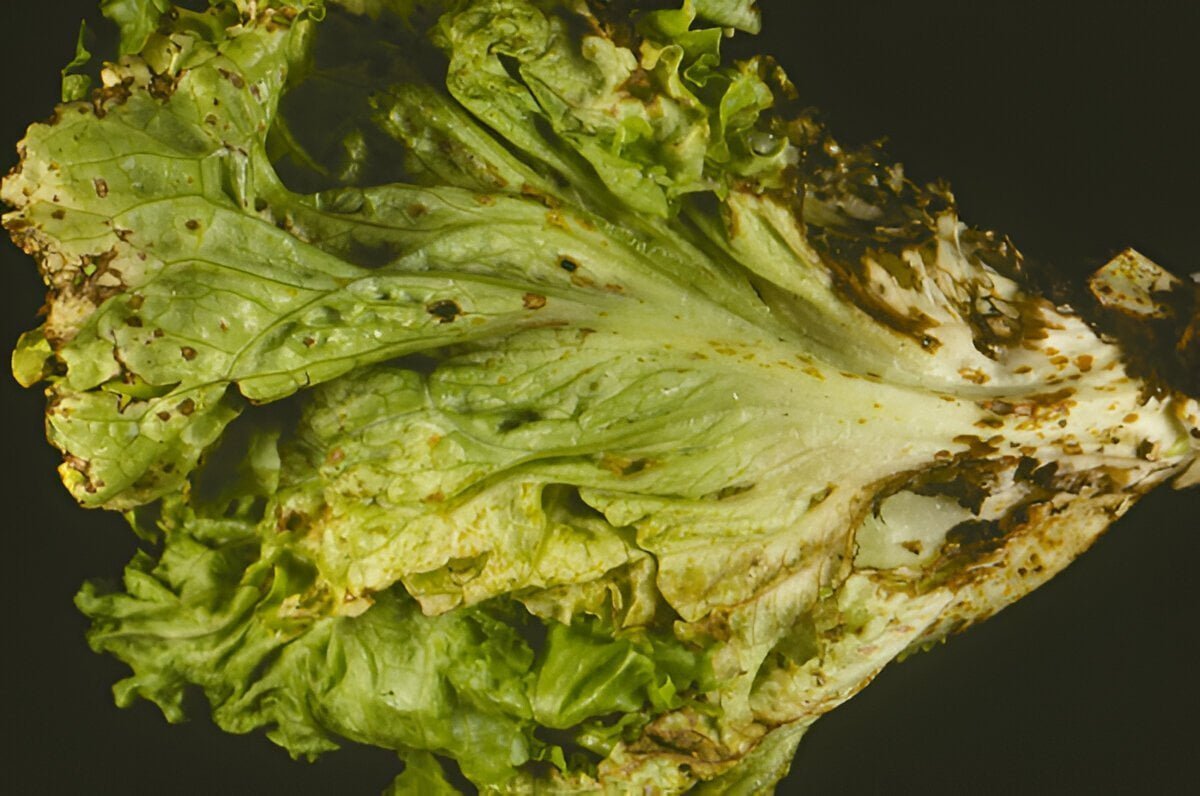 Picture of anthracnose symptoms on lettuce
Picture of anthracnose symptoms on lettuce
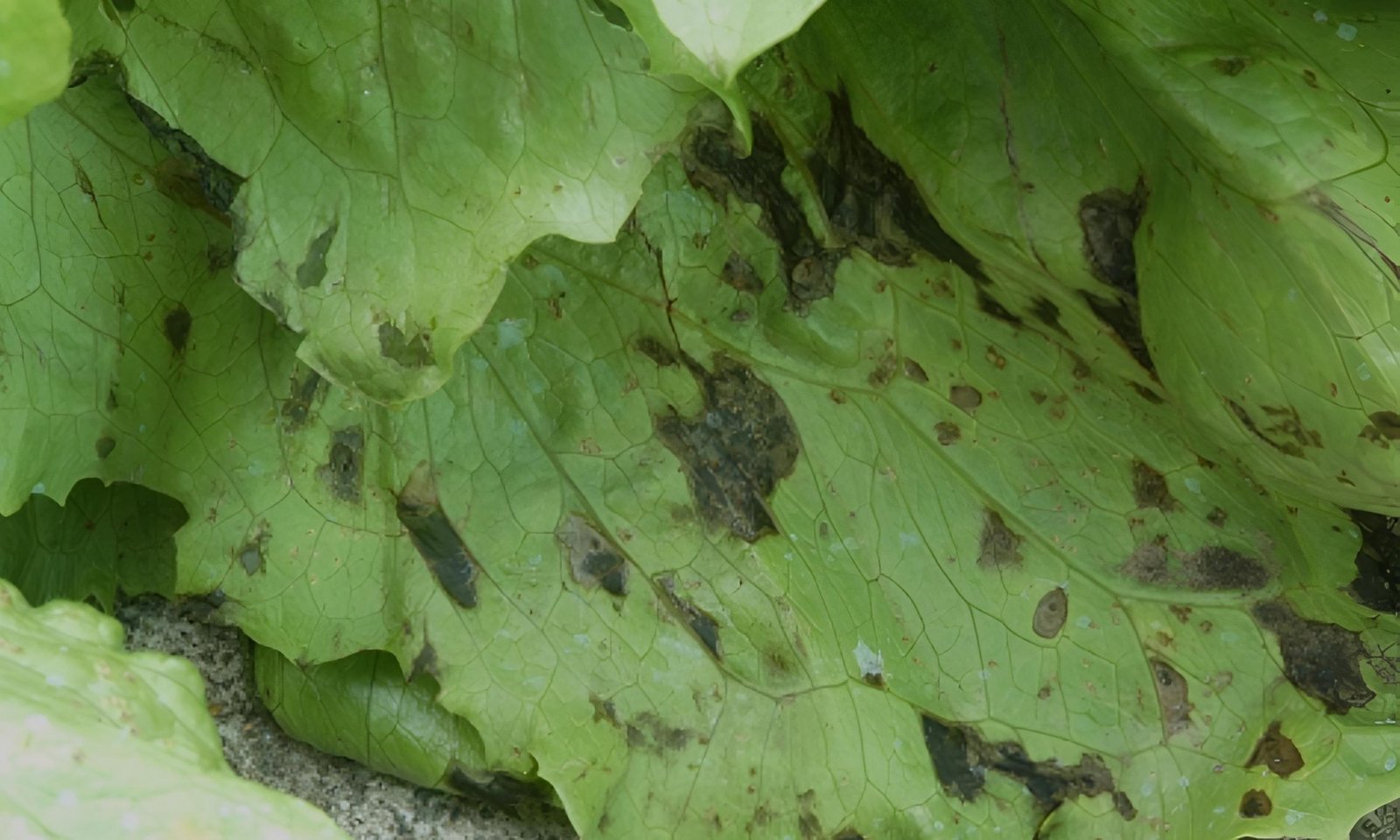
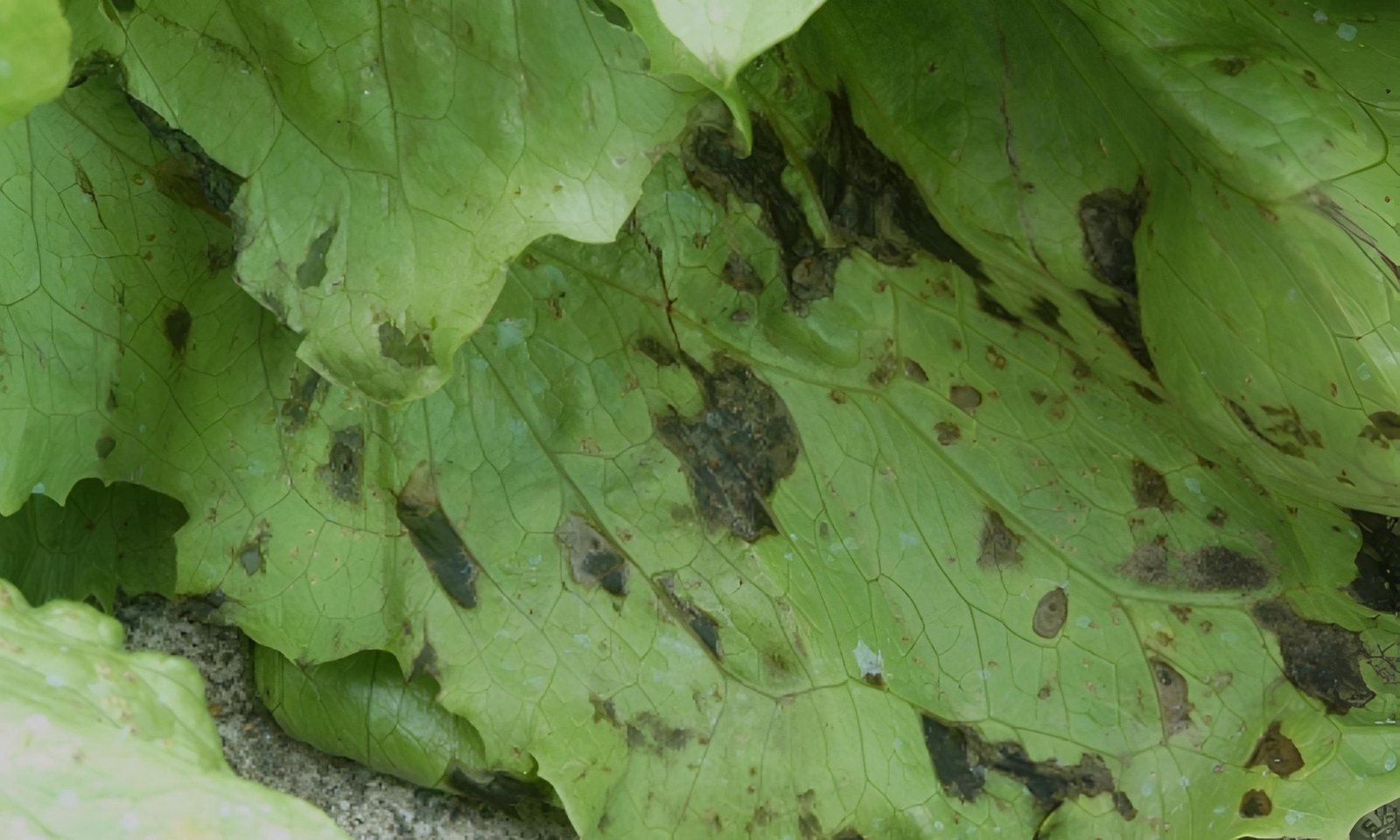
Anthracnose spots on lettuce
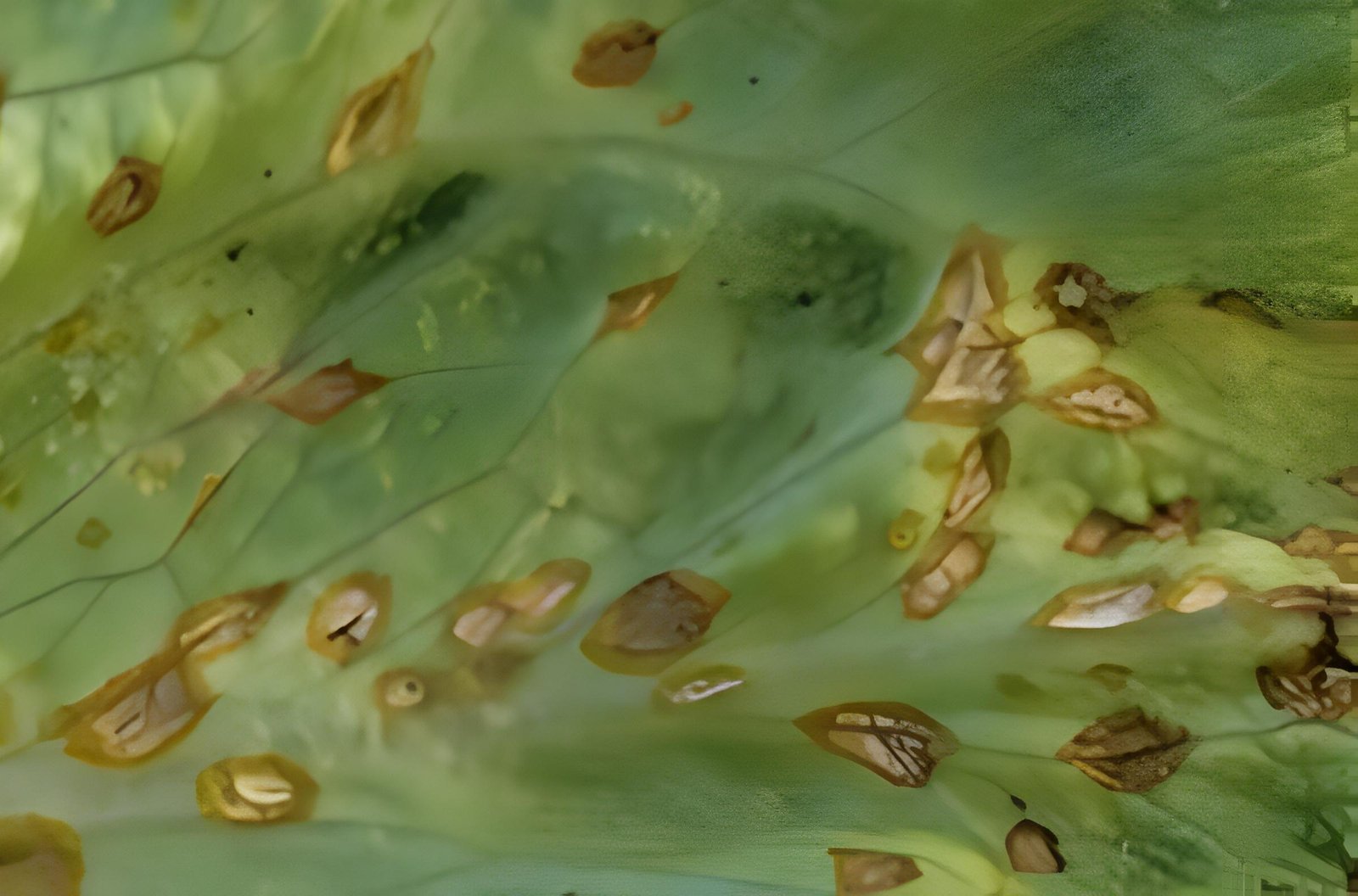
Additional picture of anthracnose symptoms on lettuce
preventive measures:
Purchase disease-free seeds, as the fungus that causes anthracnose may be inside the seeds. Seeds can also be treated by soaking them in hot water (122ºF) for 25 minutes to kill the fungus.
Cultivation of resistant varieties.
Watering should not be excessive, because flowing water helps in the spread of fungal spores.
Plant the plants in a sunny location that provides the best air movement and leaf drying conditions.
Control weeds and weeds, as the presence of weeds may increase moisture levels around plants and slow drying conditions.
Follow an appropriate agricultural cycle.
Remove and destroy crop residues once the crop has finished. The remains should not be added to compost.
Organic control:
Before sowing, immerse the seeds in a warm water bath (temperature and time vary depending on the type of seed). Use products based on Pseudomonas fluorescens, Bacillus subtilis, Bacillus firmicus, or Trichoderma harzianum fungi. Also use copper formulations (copper sprays containing copper diamonia diacetate) approved for the treatment of anthracnose in a variety of crops.
Chemical control:
One of the appropriate fungicides can be used to limit the spread of the disease, such as: Saprol, Polyram Combi, Polyram DAF, Flint, Strobi, Trimeltox Forte - Mantoux Forte - Primetox Forte - Caprotafen Topsin. Mother - Vincennes. M – Tyson. M – Histamine.
the reviewer:
GmbH, PEAT. “Anthracnose disease | Pests and diseases.” Plantix. Archived from the original on 12/31/2023. Viewed on 12/30/2023.
PW Alahakon et al.
Cross-infection potential of Colletotrichum gloeosporioides genotypes on tropical fruits
Physiol. mall. plants. Pathol.
(1994)
arnold _
Understanding the diversity of foliar endophytic fungi: progress, challenges, and limits
Fungal Biol. pastor.
(2007)
JA Bailey et al.
Infection process and host specificity of Colletotrichum species causing cowpea anthracnose, Vigna unguiculata
Maycol. Precision.
(1990)
B. F. Cannon et al.
Colletotrichum – current status and future trends
stud. Maycol.
(2012)
Yu Dam et al.
Colletotrichum acutatum species complex
stud. Maycol.
(2012)
Yu Dam et al.
Colletotrichum Boninense species complex
stud. Maycol.
(2012)
release
Lees, AK; Hilton, A. J. (2003). "Black point (Colletotrichum): an increasingly important disease of potatoes". Plant diseases. Wiley Blackwell. 52: 3-12. doi:10.1046/j.1365-3059.2003.00793.x. British Society for Plant Pathology (BSPP).
“Tomatoes | Diseases and pests, description, uses, reproduction.” Archived from the original on 12-13-2014. Retrieved 12/22/2014.
Canon, p; Dammam, U. Johnston, b. Ware, B. (2012). “Colletotrichum – current status and future trends.” Studies in mycology. Westerdijk Institute for Fungal Biodiversity. 73: 181-213. doi:10.3114/sim0014. ISSN0166-0616. BMC 3458418. S2CID8196485.
Hay, K.S. Strickland, D.; Maloney, E. Hoepting, C.; Bethbridge, S. J. (2016). "Onion anthracnose caused by Colletotrichum coccoides in New York". Plant diseases. American Phytopathological Society (APS). 100 (10): 2171. doi: 10.1094/pdis-05-16-0607-pdn.
"Tomato Anthracnose Fact Sheet". Vegetablesmdonline.ppath.cornell.edu. Retrieved 12/08/2016.
Hughes. “Collectotrichum codes” (PDF).
"UC IPM: UC Management Guidelines for Anthracnose on Tomatoes". California Agricultural University (UC ANR) – Integrated Pest Management (UC IPM). Retrieved 12/08/2016.
Dr.. Du et al.
Effects of plant pathogens destroy host immunity: different enemies and similar battlefield
The host microbe of the cell
(2012)
C. J. Eaton et al.
What drives herbaceous endophytes to switch from mutualism to pathogenicity?
Plant sciences.
(2011)
T. Giroux et al.
Linking the emergence of fungal plant diseases to environmental reproduction
Ecol Trends. development.
(2010)
AO Latunde Dada et al.
Infection process and identity of the anthracnose fungus (Colletotrichum destructivum) from cowpea (Vigna unguiculata)
Maycol. Precision.
(1996)
Show more references
